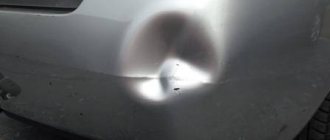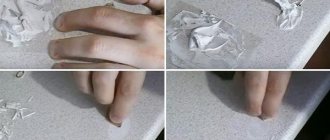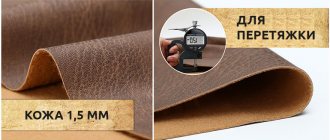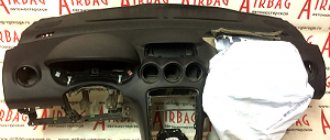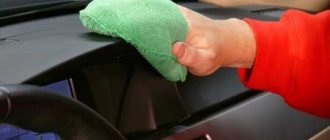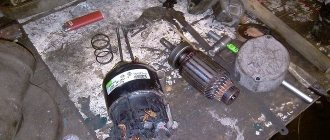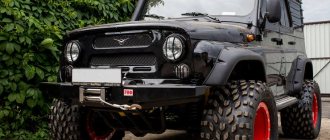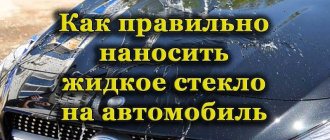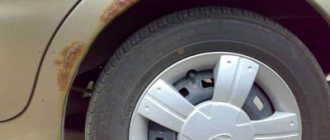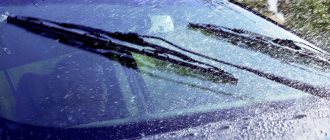Compositions for treating the underbody of a car
How best to treat the underbody of a car is a pressing question; choosing the “right” composition from the entire range of mastics, Movils, rust converters, anti-gravel coatings is not easy, the industry offers many brands and brands of various auto chemicals. Users and automotive experts have compiled many ratings published on the Internet; among anti-corrosion agents, the following chemical brands are considered the best:
Anticorrosive compounds are produced for both hidden and external surfaces, and the requirements for these compounds are different. The main properties that an anti-corrosion drug should have are:
- good adhesion (reliable adhesion to the body surface);
- the ability to reliably protect metal;
- low toxicity;
- tightness;
- fire resistance;
- elasticity (the coating should not crack or peel);
- heat resistance (the properties of the material should not change and depend on temperature).
Treatment of the underbody is carried out in several stages, and several chemical agents are almost always used. Each of the anticorrosion agents can perform several functions at once, not only prevent the appearance of rust and fight corrosion, but also serve as noise and vibration insulation, and act as body protection from impacts (pebbles, gravel, glass fragments flying from the road).
How to choose anti-corrosion drugs?
All existing automotive chemical products on the market are classified according to various factors. These are the features of application, the chemical composition of the mixtures, and the location of application. There are different anti-corrosion products for cars. Which is better? Only the one that is suitable in a particular situation.
Bitumen mastics are made on the basis of a variety of resins. This composition solves two important problems - it protects the entire surface of the car body from any mechanical impact and additionally performs the function of preserving the metal. It is recommended to apply these mixtures in a layer of 250 to 400 microns.
Rubber materials and PVC-based products are considered to be among the most durable of those found today. These solutions are used mainly in factories.
All these solutions are suitable and used only for processing external body parts and parts that are freely accessible. But these are not all surfaces that need to be serviced - cars have a lot of hidden cavities. To process these, other products should be used.
So, for hidden places, an anti-corrosion oil for cars is suitable. Which one is better among them? Only one that is made on the basis of non-drying oils. Liquid anti-corrosion agents are in exactly this state after application, as well as during the operation of the machine. Preparations of this type are good because they fill all the cracks and scratches on the metal surface.
Paraffin-based products are made primarily from waxes. When the composition hardens, it will turn into a thin elastic film. This solution, among other advantages, perfectly maintains its performance even at low temperatures.
When is underbody treatment necessary?
Often car owners think about protecting the car body only when it begins to rust. But a rusty bottom is already quite a big problem; to restore it, you often have to use welding, apply patches, and carry out quite labor-intensive work. The machine should not be allowed to rust; it is necessary to carry out anti-corrosion treatment:
- once every 3-4 years (or more often, the frequency depends on how well the body of a particular car model resists corrosion);
- immediately after purchasing a used car;
- in case of collision with an obstacle with the bottom and damage to the anti-corrosion layer (its tearing off).
It is no secret that many new cars do not receive high-quality treatment, so immediately after purchase it is recommended to look under the car and assess the condition of the anti-gravel coating. With a thin protective layer of anti-gravel, additional treatment is required; the anti-corrosion composition should be applied before the car begins to be used. If the car has not yet been driven on the roads, it will take less time to prepare; you do not need to thoroughly wash the bottom and wheel arches.
The best anti-corrosion agents for external treatment
Russian and foreign markets provide car owners with a wide range of such compounds. They are based on synthetic or bitumen resins. Products have also appeared that include zinc and other substances designed to slow down corrosion. Such anticorrosives perform various functions. The following are anti-corrosion agents that are most in demand among consumers and have a lot of positive reviews.
Dinitrol – durable protection against external damage
Made in Germany. The manufacturing company has been specializing in this area since 1939, which affects the popularity and reliability of all products. This product line is of high quality. It includes polyurethane adhesives, anti-corrosion and anti-gravel materials, as well as many others.
They are based on ortho- and dinitro components, which are developed and patented by the manufacturing company itself. Treatment with Dinitrol provides maximum protection for wheel arches, sills, underbody and other body elements from rust, chemical and mechanical influences. When applied correctly, the protection of metal surfaces will be durable.
Among the positive qualities are the following:
- Has a good level of noise absorption.
- Contains high-quality corrosion inhibitors.
- After treatment, the surface becomes airtight.
- Thixotropy - minor mechanical damage gradually disappears on its own.
- Excellent adhesion – the applied layer reaches 1 cm.
But there is only one minus:
Those who do not skimp on car care products choose Dinitrol and speak well of its qualities.
RunWay – reliability and record low cost
The product is based on a polymer mixture. Thanks to this, a reliable protective coating is formed on the surface, resistant to mechanical damage and corrosion. It is characterized by low cost.
The anti-corrosion galvanic coating of this brand is especially popular. Its composition is dominated by zinc. When processed, it reacts with the surface of the body, resulting in a strong galvanic film that has a gray tint. In addition, this product can be used as a primer in preparation for painting the body. Great for regions with cold winters.
The advantages include:
- Low price.
- Excellent resistance to corrosion.
- The two-layer coating provides protection for up to 3 years.
- Dries quickly.
The disadvantages of this tool are as follows:
- Poor sound insulation properties.
- Sometimes the aerosol system is of poor quality.
This composition is in demand in the northern corners of the country and beyond. Due to the reasonable ratio of cost and quality, most buyers prefer this anti-corrosion product.
Preparing the body for anti-gravel treatment
The entire process of applying anti-gravel consists of three main stages:
- surface preparation;
- soil covering;
- treatment with anti-corrosion compound.
The complexity of the preparation depends on the condition of the body itself: if there are pockets of corrosion, it is necessary to remove rust, if necessary, cut out pieces of rotten metal, install patches if holes appear in the bottom. But first of all, the surface to be treated must be thoroughly scraped, washed and dried, only then should body work be performed. When removing dirt, there is one caveat - dust and debris are quite difficult to remove in hard-to-reach places, for example, from hidden cavities; it is better to get rid of it using compressed air.
Before washing, dry cleaning of dirt is always carried out; it is convenient to clean the body with a wire brush, and in places of bends - with sandpaper.
When removing rust with sandpaper and cleaning the metal, it would be a good idea to give the surface some “dullness”; this is done so that the primer lays more firmly on the metal surface and adheres to the metal.
Before thoroughly cleaning the corrosive areas, the rust is treated with a special compound - a rust converter; this chemical can always be found in stores selling paint and varnish materials for cars. The converter is applied to the metal surface with a soft brush to make it easier to dip the brush; part of the liquid from the bottle is poured into a convenient wide container
After applying the composition, rust almost immediately begins to react with the chemical, the liquid begins to foam, and the rust is “eaten up.”
Anticorrosive - what is it?
Anti-corrosion drugs are special compounds that must be applied to body parts and hidden cavities. These products prevent rust from developing on metal surfaces. The means used to treat cars today can be divided into:
- Wax-based mixtures.
- Bitumen compounds.
Today, based on these drugs, a huge number of different anti-corrosion products for cars are produced. In addition to these components, the composition may contain substances that increase the effectiveness of the drug. For example, wax products contain additives that increase the strength of the metal and slow down corrosion processes. Bituminous compositions include metal mixtures.
Corrosion processes are of two types: chemical and electrochemical. In the first case, corrosion occurs due to the exposure of the body to oxygen and the compounds that contain it. During the electrochemical action, the body is in contact with electrolytes. Depending on the type of rust, a conclusion is drawn about which anticorrosive agent is best to choose for the car.
Rust converters - types and features
Rust converter is an effective chemical agent in the fight against corrosion; most often the main component of the composition is phosphoric acid. This chemical not only allows you to get rid of rust, but also protects the metal for a long time, creating a protective film. In Russia, the most widespread and popular brands of converters are:
Converters are not only liquid, but also paste-like, in the form of a gel; some products are applied by spraying; the bottles contain a spray bottle. As a rule, 15 minutes after processing the metal surface is enough for the rust to transform and be ready for further processing. After the converter has dried, the area to be treated must be cleaned with sandpaper or a metal brush, and then degreased.
The best anti-corrosion agents for hidden surfaces
Among such anticorrosives, those that have an oil base stand out. Also available with paraffin content. This ensures a constant liquid form of the composition, which allows you to thoroughly treat even microcracks that are difficult to see with the naked eye.
In addition, such products have a long service life, but they lack mechanical strength. For this reason, they are not used for exterior body treatment.
Hi Gear - the best product for finishing seams
The base is rubber, so this type of coating significantly increases the service life of body parts. During processing, the surface is covered with a kind of film that has excellent water-repellent properties. The product not only has good anti-corrosion properties, but also provides protection against chemicals used to treat road surfaces. Often used to protect seams and joints.
The advantages include the following properties:
- Contains corrosion inhibitors.
- It has good noise reduction and thermal insulation properties.
- Thanks to its excellent elasticity, it does not crack even after long periods of use.
- Suitable for surface treatment of welds of any type.
Consumers also note some disadvantages of this product:
- During initial treatment, it is necessary to apply a double layer of protective agent.
- It has low effectiveness if the surface being treated is heavily rusted.
The product is in high demand among consumers who have new cars. There are also many positive reviews from car owners with used vehicles in good condition.
Noxudol – providing excellent sound insulation
This product was developed by the Swedish manufacturing company Auson a long time ago. This composition differs from other similar materials on the market in that, in addition to reliable protection of body elements from corrosion and mechanical influences, it provides high-quality noise absorption.
The product is produced in two forms - one is intended for individual use, the second is used mainly at service stations. The substance is suitable for treating any body part, including internal elements, underbody, etc. Mainly used to coat internal parts. The main disadvantage is the long drying time of the product. Since this anticorrosive agent has a very thick consistency, individual processing becomes inconvenient and time-consuming.
Body primer treatment
After complete preparation, the protected areas of the underbody must be treated with a primer, in other words, primed (a primer is the same primer). It is more convenient to apply the primer with a spray bottle, you can also use a regular paint brush, but in the second case, the processing will take longer, and the primer material will not lie so evenly on the body surface. Another plus of a spray gun is that it is more convenient to cover metal with primer in hard-to-reach places; the spraying method guarantees an even layer over the entire bottom of the car.
It is necessary to treat all areas of the body with bare metal and areas etched with a rust converter with a primer, but if the primer gets on the protected parts of the bottom, it will not make it worse. The next stage is to coat the entire body surface from below with primer, but if the bottom has not suffered from corrosion, you can skip this stage, making do with good preparation (cleaning) and degreasing. After this, it will not be superfluous to treat the welding seams and recesses with sealant, and also seal the surface around the welded cups.
The primer and sealant must dry thoroughly, only then can you proceed to the next stage of processing - applying an anti-corrosion coating.
Which rust repair method is best to choose?
After we have figured out what to do if rust appears on the bottom of the car, we must make a choice. There is no unambiguous definition of the type of processing. You need to act comprehensively, using various methods. Each method has its own advantages and disadvantages.
Advantages of the mechanical method:
- possibility of removing large deposits;
- availability and low price of materials.
Flaws:
- duration and complexity of the process;
- inability to work in hard-to-reach places.
Advantages of chemical treatment:
- complete removal of corrosion areas;
- preventing further development of defects;
- ease of processing in the most inaccessible places;
- speed of processing.
Flaws:
- low penetrating ability (several microns);
- toxicity of components;
- high price.
Application of anti-gravel
The anti-corrosion agent comes in various types; it can be a preparation like Movil, mastic or anti-gravel. The protective coating is applied to the body surface in three ways:
- spraying from a bottle (if the packaging bottle is equipped with a sprayer);
- using a spray gun (if you have this device and a compressor with compressed air);
- with a brush or roller, this method is usually used if the bottom is treated with mastic.
The use of a spray gun is the most effective method of treatment: the anti-gravel layer is applied evenly to the body, while high productivity is achieved and time costs are minimal. But not all car owners can carry out such treatment, as they do not have the necessary equipment.
The anti-gravel composition is also applied quite evenly from a spray can, but the productivity here is low, the processing takes longer. You can coat the bottom with a brush, but you need to be patient and get used to applying the anti-corrosion layer evenly. The body is covered with Movil or anti-gravel in two or three thin layers, after each treatment it is necessary to allow the composition to dry for 20-25 minutes.
The procedure for applying anti-corrosion protection to the bottom from the inside
Having figured out how to treat the bottom of the car inside, you need to find out how to do it. There are different types of anticorrosion packaging: metal and plastic containers, aerosol cans and cylinders for a special gun.
The better the car's thresholds are treated inside, the longer the car will last, because this is one of the most vulnerable parts to corrosion. Anticorrosion is applied using an aerosol can according to the following rules:
- shake immediately before use;
- start spraying, keeping it at a distance of fifteen centimeters from the surface;
- take five-minute breaks between applying layers;
- apply the mixture at least three times;
- when finished, dry with an industrial hair dryer;
- Replace the protection and let the vehicle sit for two to three hours before use.
There is also the option of applying bitumen anticorrosive, but it is more labor-intensive and provides less protection.
The body treatment occurs in the same sequence, with the only difference being that a brush is used instead of an aerosol. It is necessary to carefully coat the surface in two or three layers, paying attention to all seams, cracks and hard-to-reach places. In special cases, it is more convenient to use a spray can than to cover the inside of the car with your own hands using a brush, but this is not very effective. In the case of pushsal, an aerosol for a car cannot be used - during the spraying process, the composition quickly hardens and does not lie on the surface.
When processing with mastic, it is worth heating it up, this increases adhesive properties and helps fill hard-to-reach places. It should be remembered that mastic hardens longer than oil, so if you apply a thick layer, the vehicle will be inoperative for about a week.
When choosing what to treat the bottom of the car inside the cabin, you need to remember that the issue of using different anticorrosion agents remains individual for each car enthusiast. Fortunately, many stores and websites provide an assortment and the opportunity to find an option that matches the characteristics of the machine.
Movil for anti-corrosion treatment of the bottom
There are many chemical preparations for anti-corrosion treatment of the underbody on the automotive market, and one can argue endlessly about which product is better. Movil is very popular in Russia; this anticorrosive agent was developed in laboratories in Moscow and Vilnius. It is believed that Movil is more suitable for treating hidden cavities, however, it is often used to cover the bottom; depending on the brand, the composition is quick-drying and may not dry for a very long time. There is no big difference between the product and the manufacturer; all companies produce anticorrosive agents with similar chemical properties.
Movil "Zinc" is most often sold in half-liter bottles, applied with a brush, treatment is carried out in two or three thin layers, after each application you must wait 20 minutes. The main advantages of this composition:
- very low price;
- high elasticity;
- Possibility of applying the product to a painted surface.
Disadvantages of Movil - strong odor, poor resistance to mechanical stress. The layers when applying anti-corrosion protection must really be very thin, otherwise everything may simply fall off.
Choosing anticorrosive for the inner surface
When selecting a product, it is recommended to take into account a number of indicators. Anticorrosive should:
- have a high level of adhesion;
- densely fill cracks, chips;
- protect the surface from moisture and other liquids;
- preserve areas with rust on the body (although it is better to clean or weld such places);
- displace moisture.
Also, the material must be elastic, otherwise cracks will form on the surface. Mostly these are non-drying products that provide a sufficient level of protection, especially at the junctions of parts and various crevices. Such anticorrosives come with an oil and paraffin base. Their only disadvantage is their instability to mechanical stress, as a result of which they cannot be used on external parts of the body.
Anti-gravel compounds
Anti-gravel is often produced under foreign brands and comes in black, gray and white. The most well-known brands of this product for treating the lower part of the bottom:
- Tectyl Bodysafe;
- Tectyl Zinc Bodysafe;
- Dinitrol 479;
- Protex;
- Mercasol 3;
- Liqui Moly.
The anti-corrosion material Dinitrol 479 is often called “liquid fender liners” and is used to treat both wheel arches and the outside of the car’s underbody. Usually the product is sold in liter and 5-liter jars; Dinitrol is based on polymer rubber. The anticorrosive color is black, the manufacturer guarantees the reliability of the coating for seven years.
Composition and application
Many people have seen road workers laying new asphalt. But few people know and think about what material is used for stable bonding of asphalt particles.
- This material is called bitumen, and it is the basis of the mastic used to cover the car.
- The material also contains particles of chemical elements (depending on the type, they can be based on rubber or recycled rubber).
- The material itself is presented in the form of a black viscous mixture. Often, for its effective application, it must be diluted with other alcohol-based materials.
This material is produced in special cylinders - a standard container weighs 5 kg. Bitumen-based mastics are used by automakers everywhere to protect the underbody as the most effective means of protection.
But how soundproofing of car fender liners is done and why it is necessary is indicated here.
Considering the high density of the material, its protective properties last for at least 5 years with intensive use or approximately 100,000 kilometers.
By preventing moisture particles from entering the car body, mastic serves as a kind of protection against corrosion.
In the video - bitumen mastic for a car:
Mastics for treating body underbody
To protect the car body, three main types of mastic are used:
- rubber bitumen;
- polymer-bitumen;
- epoxy.
Any mastic is characterized by a fairly low cost, is characterized by ease of use and high durability. Products under the Bikar and Allright trademarks are known on the Russian market; anti-corrosion material is applied with a brush or spray gun and has good adhesion.
It is better to dilute the bitumen-rubber mastic “Oilwright” with regular gasoline and apply it in warm or hot weather. Mastic on the bottom of the car holds better than anti-gravel sprayed from a can, does not crack and resists mechanical stress well. As a rule, treatment with this product is enough for 2-3 years of car operation, but the big disadvantage is that bitumen mastic stains everything possible, and it smells quite unpleasant.
The content of the article:
In this article we will figure out how to properly process the underbody of a car with your own hands. The bottom and wheel arches of the car are most susceptible to the effects of stones and sand flying from the road while driving. For protection, a special elastic coating is used, which reduces the noise from which stones bounce off without damaging it. An additional problem when operating a car is the sand-salt mixture on the roads in winter, which causes electro-chemical reactions that accelerate the occurrence of corrosion. Plain water without salts does not pose such a danger for cars that have standard factory protection. It is the presence of salts in the climate and on roads that accelerates the appearance and spread of corrosion. Salt has the greatest impact when the temperature rises above zero. In cold weather, salt does not have such a strong effect. Therefore, it is very important to wash the underbody and wheel arches more often during slushy conditions.
p, blockquote 2,0,0,0,0 –>
Therefore, the protective coating must also provide good corrosion protection.
p, blockquote 3,0,0,0,0 –>
The rust is like an iceberg, only 10 percent of it is visible. Moisture enters and remains in hard-to-reach places without ventilation. In most cases, corrosion starts from the inside and moves outward.
p, blockquote 4,0,0,0,0 –>
Areas vulnerable to corrosion are areas with spot welding. When welding metal, the galvanic coating evaporates and the molecular structure of the metal is weakened. Thus, the risk of metal oxidation – corrosion – increases. You can read the article “how to remove rust from a car,” which describes in detail ways to combat corrosion.
p, blockquote 5,0,0,0,0 –>
In this article, we will look at the types of protective coatings for the underbody, their advantages and disadvantages, as well as how to treat the underbody of a car with your own hands.
p, blockquote 6,0,0,0,0 –>
How to react to enamel peeling
Damage to the factory body coating (paint, enamel, anti-corrosive layer) requires immediate intervention. You cannot delay time if you notice an area of exposed metal. In such a place, a corrosion center will form in the shortest possible time, the localization and elimination of which will require a lot of costs, time and materials.
The general idea is that the sooner measures are taken, the easier it will be to stop the destruction of the metal.
Sequence for removing rust from the bottom of a car:
- elimination of peeling areas of paintwork;
- removing rust from the bottom of the car;
- degreasing damaged areas;
- rust converter treatment;
- puttying;
- applying anticorrosive.
What is the factory underbody protection?
The first barrier against metal oxidation is zinc coating, also known as galvanic coating. It is one of the most commonly used protective coatings in the automotive industry. Different automotive manufacturers may use different methods for applying zinc at different thicknesses. Galvanized steel, even if the protective coating is damaged, may not rust for some time. This is followed by factory primer and a protective elastic abrasion-resistant coating that protects against moisture penetration, the impact of stones and reduces vibration and noise inside the cabin.
p, blockquote 7,0,0,0,0 –>
Today, the most common materials for protecting the underbody of foreign-made cars are coatings based on polyvinyl chloride (PVC), polyurethane (PU) and a small percentage of acrylic coatings.
p, blockquote 8,0,1,0,0 –>
p, blockquote 9,0,0,0,0 –>
PVC-based bottom protective compounds are a suspension of polyvinyl chloride particles in non-volatile plasticizers, stabilizers, adhesion enhancers, pigments and fillers. This is the so-called plastisol. It has good sound-absorbing properties. PVC is a wear-resistant coating. The main advantage of this coating is durability. PVC-based plastisols provide long-term protection and are flexible. The adhesion of PVC coatings does not satisfy all requirements, so a special primer or adhesion enhancer is first used.
p, blockquote 10,0,0,0,0 –>
Plastisol is applied using an airless method. Air is involved in the application, but does not mix with the protective composition.
p, blockquote 11,0,0,0,0 –>
At the factory, after application, the coating is exposed to high temperature (from 100 to 175 degrees Celsius for one and a half hours). During heating, PVC particles soften and dissolve in the plasticizer, forming a homogeneous film. After cooling, the coating becomes stone-resistant, waterproof and chemically inert. When forming a protective coating film, there is no evaporation of volatile substances that can spoil the integrity of the film. Abrasion resistance is enhanced by the fillers included in the coating. One of the requirements for a coating is its ability to be applied by spraying without clogging the spray nozzles. For this purpose, fillers have been selected that meet these requirements.
p, blockquote 12,0,0,0,0 –>
Polyurethane-based coating is more wear-resistant. The necessary protection against stones can be achieved with a thinner coating thickness. As a result, the overall weight of the vehicle is reduced. Automotive coatings based on polyurethane (PU) combine a combination of hardness and elasticity. These properties provide a good combination of chip and abrasion protection. With all the advantages, polyurethane coating has a higher cost than PVC-based coating.
p, blockquote 13,0,0,0,0 –>
An alternative to protective coatings based on PVC and polyurethane (PU) is acrylic coating. This material has the best foam-forming and sound-proofing properties.
p, blockquote 14,0,0,0,0 –>
Is it necessary to have the underbody treated on a new car?
There are different opinions on whether it is worth treating the underbody and wheel arches on a new car. Some experts believe that the car has factory protection and does not require additional treatment, and the anti-corrosion treatment service at dealership centers is intended to siphon off money. Others counter that standard protection is not enough, as the underbody protection on newer cars may not be thick enough to save money. No matter who cites anything as an argument, disputes remain.
Compositions for exposed surfaces
Protective agents for exposed surfaces can in turn be divided into:
p, blockquote 19,0,0,0,0 –>
- coatings that provide long-term protection;
- coatings requiring periodic re-treatment.
Coatings that provide long-term protection are mastics based on rubber, bitumen or polymers. Their main advantage is that they are resistant to stones and reduce noise in the cabin. They can be sprayed using a special gun (shutz gun) or applied with a brush. Their task is to seal the bottom from the environment.
p, blockquote 20,0,0,0,0 –>
Most long-term underbody protection products have a bitumen base. Bitumen based products are non-curing. They remain elastic for a long time and do not become fragile.
p, blockquote 21,0,0,0,0 –>
The anti-gravel coating contains rubber and polymers, hardens, but remains elastic. Small stones bounce off it. You can read the article “features of applying anti-gravel”, which describes in detail its properties, preparation for application and application.
p, blockquote 22,0,0,0,0 –>
Coatings that provide long-term protection do not penetrate deep enough into metal folds and hard-to-reach areas where corrosion typically occurs. Such products are effective if applied to a clean, dry surface, preferably a new one. If for some reason such a coating is damaged, then moisture will enter through this damage, creating a “pocket”. As a result, corrosion will develop inside the protective coating and will not be noticeable. Even bitumen coatings can become hard and brittle over time and crack. Water can get inside through cracks.
p, blockquote 23,0,0,0,0 –>
Coatings that require periodic re-treatment are The protective film of these components, unlike the film formed by long-term compounds, allows the moisture remaining inside to evaporate. This property helps prevent the appearance of new rust.
p, blockquote 24,0,0,1,0 –>
The wax is not harmful to health and can be used on the underbody even inside the cabin. Wax-based formulations, unlike oil-based formulations, can dry out over time.
p, blockquote 25,0,0,0,0 –>
Oil-based compositions can be considered the best anticorrosive, as they have good penetrating ability, displace moisture and do not dry out. Oils can soften the factory underbody protection.
p, blockquote 26,0,0,0,0 –>
Protective coatings based on wax and oils do not provide mechanical protection to the bottom, are not durable and require periodic renewal.
p, blockquote 27,0,0,0,0 –>
Compositions for hidden cavities
For cavities, the protective composition must have different characteristics. It should be liquid, penetrating into all cracks and crevices, and never dry out. Internal cavities are treated with wax or oil-based products. The product must contain inhibitors that can inhibit the corrosion that has occurred. It should displace water and neutralize salt. This protection needs to be updated periodically. A quality cavity wax will help displace moisture and protect the metal. It is important to apply the composition by spraying so that it is carried out in all directions (360 degrees) and gets into all hard-to-reach places. For cavities, you cannot use sprayers designed for applying anti-gravel, as well as the products themselves for open surfaces. They are not useful for use in cavities.
p, blockquote 28,0,0,0,0 –>
Liquid cavity formulations may leak over time and require periodic re-treatment (every 1-2 years).
p, blockquote 29,0,0,0,0 –>
Cannon fat
p, blockquote 30,0,0,0,0 –>
Separately, it is worth noting the so-called “cannon fat”. This protective composition is a thickened oil containing anti-corrosion additives, designed specifically to protect the vehicle's metal from oxidation. Solid “cannon fat”, which is used for the bottom, contains a lot of paraffin. Soft is used for processing inside cavities. This product has proven itself to be a good anticorrosive agent. It adheres well to the surface and is not washed off with water. However, “cannon fat” does not provide mechanical protection and requires periodic renewal.
p, blockquote 31,0,0,0,0 –>
Preparation for processing the underbody of the car
p, blockquote 32,0,0,0,0 –>
- Components that get hot or have moving parts (eg ball joints, shock absorbers) should not be coated with underbody cleaner. Use newspaper and masking tape to cover such parts.
- Before you start spraying the product, it needs to be heated. To do this, place it in a bucket of hot water for a few minutes. Preheating the anti-gravel in a bucket of hot water will help to mix it better and easier to the desired consistency. Heating reduces viscosity. This way the product will be sprayed better. If the anti-gravel spray is too liquid, you can slightly reduce the pressure on the gun.
- The protective agent is sprayed into hidden cavities (spars and reinforcements) through technological openings. If necessary, these holes are drilled with a cone drill. Parts that cannot be processed must be covered with covering material and masking tape.

